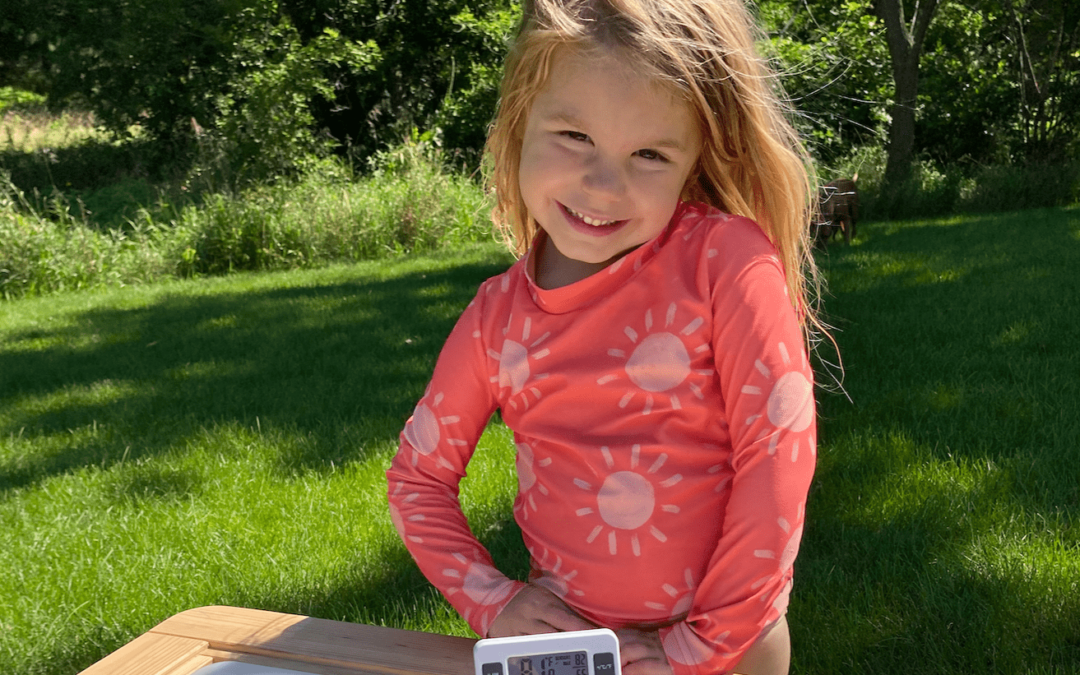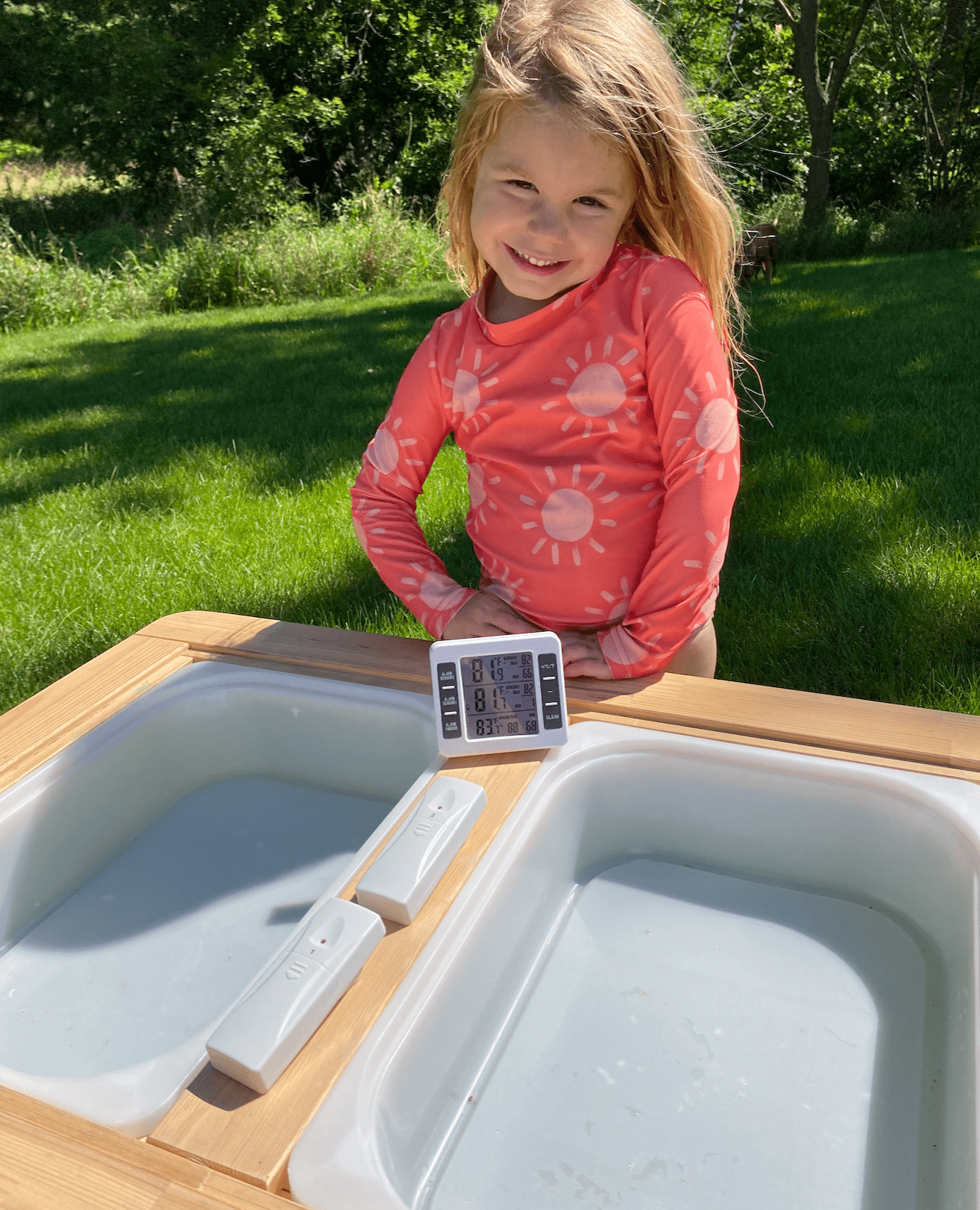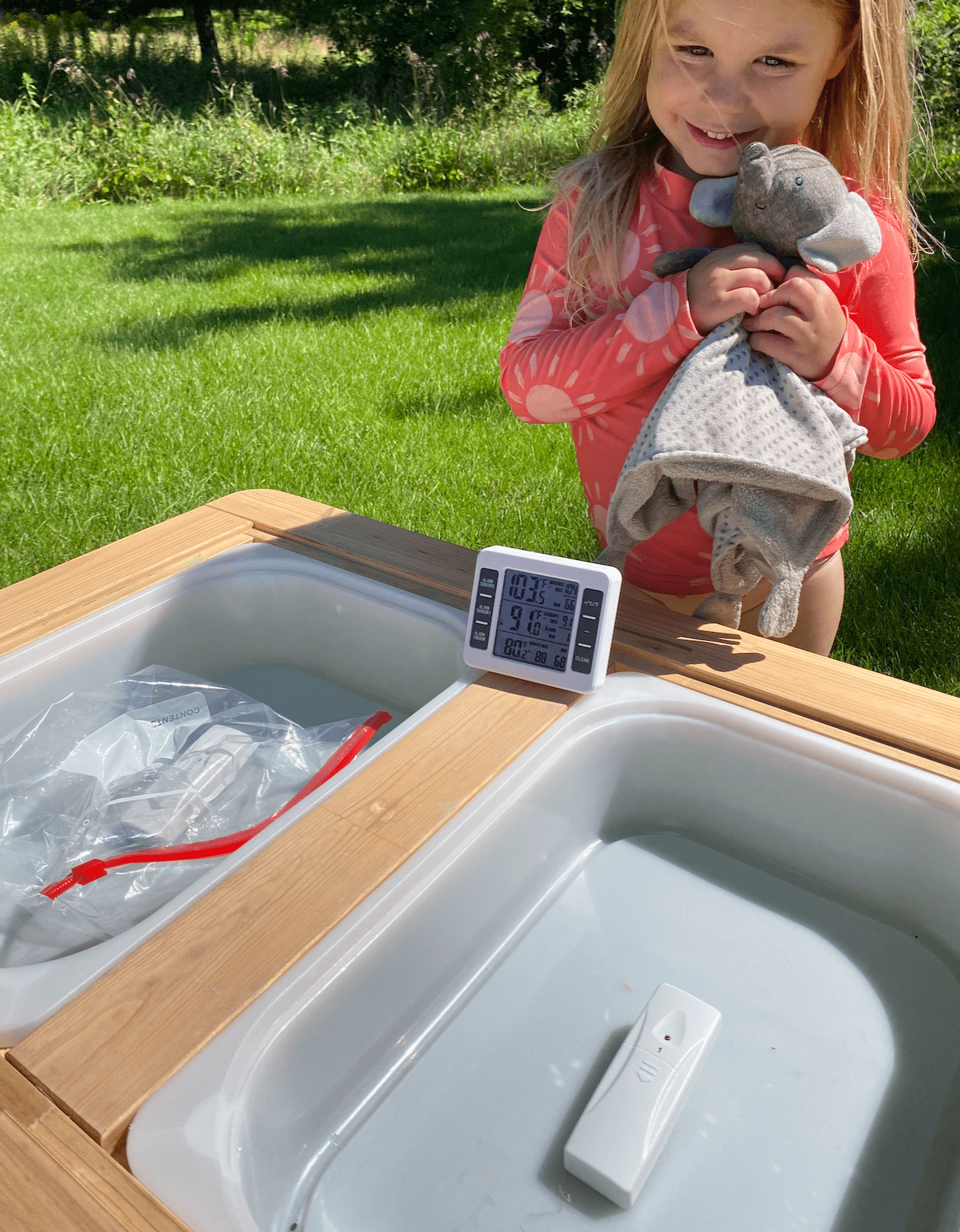Weather around the world has become even more extreme in the past few years, with this summer among the hottest on record. In July, the world recorded its warmest day ever and then exceeded it the following day1.
Heat waves, wildfires, and floods have been responsible for destroying forests, displacing people and wildlife, and dispersing particle pollution that causes unhealthy air conditions across the United States and beyond2. Here in California, where fires can occur at any time but wildfire season generally begins in June or July and ends in late fall, this summer has been exceptionally active, with hot, dry conditions making the Park Fire one of the largest in the state’s history and, as of this writing, only 34 percent contained.3
According to the National Oceanic and Atmospheric Administration (NOAA), climate change has been “a key driver in increasing the risk and extent of wildfires in the western United States during the last two decades,” where hotter temperatures and drier conditions cause wildfires to burn longer.4 Greenhouse gases, responsible for trapping heat in the atmosphere, are causing the planet to warm.
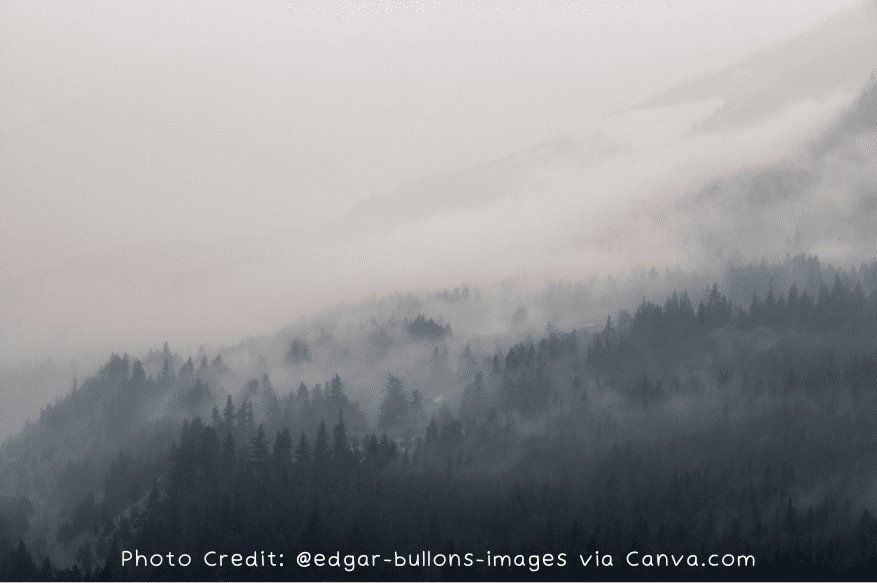
While these events are concerning for everyone, kids in particular may be especially anxious about the news and daily disruption of wildfire smoke in California and beyond. If you’re not sure how to broach the difficult topic of climate change and the effects of wildfires with your kids, you’re not alone.
If your child has experienced wildfires or smoky air in recent months, you can open up the discussion with these ideas:
- Ask, “Have you noticed the air seems smoky or it’s hard to see the blue sky? That smoke is coming from a big area of trees that are on fire. How do you think trees catch fire?”
- If your family camps or spends time in the forest, familiarizing kids with Smokey Bear and general fire safety tips can help them understand how accidental fires start.
With basic info about greenhouse gases, an easy STEM experiment to demonstrate the greenhouse effect, and some ideas for further reading, you can help them understand what’s happening in our world today and inspire them to find solutions in the future.
What Are Greenhouse Gases?
While your child may not grasp all the details about the gases below, sharing the basics may help when performing the experiment, at least for older kids (and it’s a good refresher for adults!). For more information, you can check out the EPA’s climate change resources for kids here.
Greenhouse gases trap heat from the sun in the atmosphere, a process called the “greenhouse effect.” When sunlight reaches the earth’s atmosphere, the light can get in but the heat that builds can’t escape. Four different types of gases are responsible for the greenhouse effect:
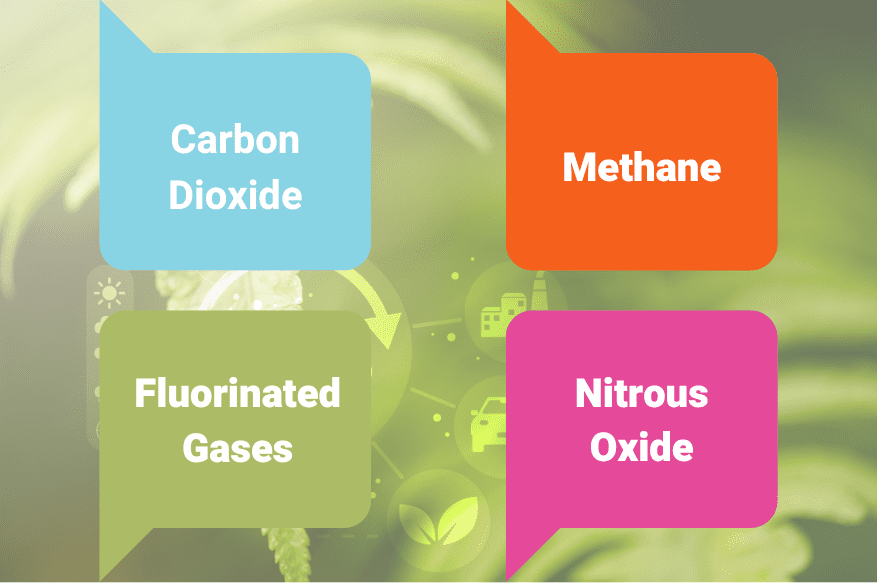
Carbon Dioxide
Carbon dioxide makes up the vast majority of greenhouse gas emissions, nearly 80 percent5. Wildfires are a source, but burning fossil fuels (such as coal to generate electricity, or from the gas we put in our cars) and cement production also create carbon dioxide. Some carbon dioxide is absorbed by plants, which remove it from the atmosphere and give off oxygen.
Methane
Methane makes up the second largest share of greenhouse gases in the atmosphere, a little more than 10 percent. Producing and transporting coal, gas, and oil; decaying material in landfills; and agricultural runoff and livestock (from the farts and burps of cows raised for meat) all contribute to methane emissions.
Nitrous Oxide
Nitrous oxide is a by-product of fossil fuels, some agricultural practices (like runoff from fertilizer that helps crops to grow)6, and wastewater treatment (like the water that goes down the drain or gets flushed down the toilet). It makes up a smaller amount of greenhouse gases.
Fluorinated Gases
Fluorinated gases, like hydrofluorocarbons, make up a small but potent fraction of greenhouse gases and trap substantially more heat than carbon dioxide. They are produced for and emitted by certain industries, like electronics manufacturers (think of the factories that make your tablet, phone, or computer). 7
Greenhouse Effect Experiment
Teach kids about the greenhouse effect with this very simple experiment. The experiment requires a sunny day and must be performed outdoors or on a windowsill with direct sunlight.
What You’ll Need
- 2 outdoor or room thermometers
- Plastic ziplock bag large enough to fit a thermometer
How to Do It
- Ask kids to seal one thermometer inside the bag.
- Place both thermometers on the windowsill or outside in direct sun.
- After 10 minutes, ask kids to record the temperatures of each thermometer.
This little one had a thermometer with two sensors and measured the outside temperature. You don’t need something like this. Simple thermometers work great! You can see the starting temperatures:
– Sensor 1: 81.7 degrees Fahrenheit
– Sensor 2: 81.9 degrees Fahrenheit
– Outdoor Temperature: 83.7 degrees Fahrenheit
Ideas for Discussion
- Which temperature was higher? Why? Ask kids if they’ve ever been in a greenhouse. What was it like inside? Outside? Explain that the sunlight can easily reach inside the greenhouse and plastic bag because it is transparent, and heat builds inside. Light can get in, but heat is trapped by the glass or plastic.
- Ask kids if they know what greenhouses can do for plants. But what happens to plants when the temperature gets too warm?
- Explain that carbon dioxide and other gases created when oil is burned to power cars and factories are like the greenhouse glass or the plastic bag. When sunlight reaches the earth inside (the thermometers), it warms the atmosphere and helps plants to grow. But when the heat of the sun builds and is trapped by the greenhouse gases, the temperature becomes too warm, just like the air inside the plastic bag.
- Discuss kids’ ideas for how to solve the problem.
After 10 minutes, the sensor in the plastic bag measured 103.5 degrees Fahrenheit while the inter one was 91.0 degrees Fahrenheit. You can see that even adding a sensor without the bag into the container became warmer than the outside temperature. Another change the parents were able to talk about!
For Further Reading
Much has been written about climate change and the greenhouse effect, and there are many books for older children that talk about the issue, sometimes in bleak terms. But younger kids may need a gentler introduction to understanding the challenge of climate change, while older children may be ready to learn more about the science and what humans can do to help mitigate the effects. Here are a couple of suggestions to locate at your favorite independent bookstore or local library to keep the conversation going.
- Iceberg, a Life in Seasons by Claire Saxby and Jess Racklyeft. This beautifully illustrated book for kids ages 3 to 6 follows an iceberg through Antarctica’s seasons and shows animals that rely on it for their survival. The author’s note explains the effects of climate change.
- The Magic School Bus and the Climate Challenge by Joanna Cole and Bruce Degen. Part of the classic Magic School Bus series, this book for kids ages 7 to 10 takes readers on a wild field trip to learn about places affected by climate change.
- Meltdown: Discover Earth’s Irreplaceable Glaciers and Learn What You Can Do to Save Them. This book for slightly older kids (8–12) focuses on glaciers to discuss climate change. It explains how warming ice affects other parts of the planet and offers suggestions for what we can do to help curb the effects.
Climate change and its role in wildfires that disrupt life in California and other western states is difficult to talk about with kids, but understanding the science behind greenhouse gases is one way for children to begin to understand humans’ relationship to the planet’s warming. And learning about STEM today can help children become innovators and leaders of the future who can help find solutions to big issues.
Sprout your kid’s curiosity by enrolling your child in one of our programs, and help prepare them to tackle tomorrow’s problems with fun STEM learning today.
- Gloria Dickie, “World Recorded Hottest Day on July 21, Monitor Says,” Reuters, July 23, 2024,” https://www.reuters.com/world/world-registers-hottest-day-ever-recorded-july-21-monitor-says-2024-07-23/; and Sarah Kaplan, “Earth Broke All-Time Heat Record Two Days in a Row, Scientists Say,” Washington Post, July 23, 2024, https://www.washingtonpost.com/climate-environment/2024/07/23/hottest-day-ever-recorded-climate-change/.
-
Gabrielle Canon,“‘Multiple Disasters All in One Day’: New Mexico’s Brutal Week of Fire and Flood,” Guardian, June 22, 2024,” https://www.theguardian.com/us-news/article/2024/jun/22/new-mexico-wildfires-floods-disaster.
- Kate Selig and Soumya Karlamangla, “What to Know About the Park Fire, the 4th Largest in California History,” New York Times, August 8, 2024, https://www.nytimes.com/2024/08/08/us/park-fire-california.html.
- “Wildfire Climate Connection,” NOAA, July 24, 2023, https://www.noaa.gov/noaa-wildfire/wildfire-climate-connection.
-
“Overview of Greenhouse Gases,” Environmental Protection Agency, last updated April 11, 2024, https://www.epa.gov/ghgemissions/overview-greenhouse-gases.
-
“Agricultural Runoff Contributes to Climate Change,”National Science Foundation, November 8, 2021, https://new.nsf.gov/news/agricultural-runoff-contributes-climate-change.
-
“Fluorinated Greenhouse Gas Emissions and Supplies Reported to the GHGRP,” Environmental Protection Agency, last updated July 11, 2024, https://www.epa.gov/ghgreporting/fluorinated-greenhouse-gas-emissions-and-supplies-reported-ghgrp.

